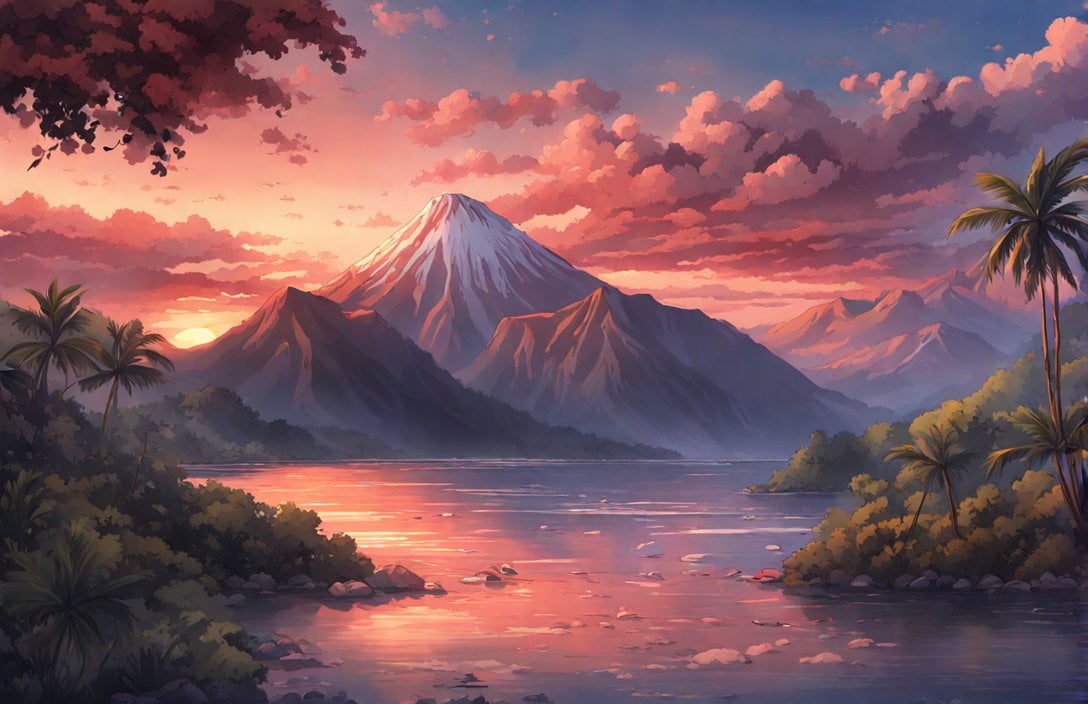Discover Fascinating Facts about Samoan Culture, History, and Society. Delve into the captivating world of Samoa, where a rich tapestry of traditions and customs awaits. From the vibrant Samoan language to the intricate arts and sports, this article unveils intriguing insights into the interconnectedness of Samoan society within the broader Pacific region. With an expert’s eye, we explore the captivating history, spirituality, and unique aspects of Samoan culture, offering a window into a truly fascinating world.

Key Takeaways:
- Traditional Samoan houses, known as ‘fale,’ have open structures without walls, emphasizing a communal living experience and a strong connection with nature.
- Fish and coconuts are essential to the Samoan economy and diet, with fishing being a significant industry and coconuts widely used in various aspects of Samoan life.
- Fire dances are a popular form of entertainment in Samoa, showcasing the performers’ skill and bravery in manipulating fire instruments.
- Many young Samoans rely on remittances from relatives abroad as a vital source of income due to limited employment opportunities in the country.
- Samoa made a unique calendar adjustment in 2011 by skipping a day, going from December 29 to December 31, to align with trading partners and facilitate communication and business transactions.
These facts provide insight into the cultural, economic, and unique aspects of Samoa, highlighting its distinctive identity and way of life.
Interesting Facts About Samoan Culture, History, and Society
Samoa, the picturesque island nation nestled in the Pacific Ocean, holds a treasure trove of captivating facts that shed light on its unique culture, rich history, and vibrant society. Let’s dive into some intriguing details about Samoa that will transport you to this enchanting destination.
1. Traditional Houses: Welcoming Nature
In Samoa, traditional houses, called ‘fale,’ are more than just buildings; they are open structures without walls. This architectural design embodies the islanders’ profound connection with nature and their emphasis on communal living. The absence of walls allows a seamless flow of fresh air and fosters a deep sense of togetherness within the community[^1^].
2. Economic Importance of Fish and Coconuts
Fish and coconuts are not only staple elements in the Samoan diet, but they also play a pivotal role in the country’s economy. The art of fishing holds significant importance as it contributes to a thriving industry that sustains local livelihoods. Additionally, coconuts are versatile resources utilized for various purposes, including food, crafts, and even beauty products. Their significance in Samoan culture can be seen in traditional ceremonies and daily life[^1^].
3. The Thrilling Fire Dances
Samoa boasts a captivating tradition known as fire dances, which have become immensely popular on the islands. These performances are an awe-inspiring showcase of skill, bravery, and artistry. Highly trained performers expertly manipulate fire instruments, mesmerizing audiences with their daring movements and ancient rhythms. Fire dances not only entertain but also preserve the cultural heritage of Samoa, passing down ancient rituals from one generation to the next[^1^].
4. Reliance on Remittances for the Youth
In Samoa, many young people struggle to find employment opportunities locally. As a result, they heavily rely on remittances sent by their relatives living abroad. These financial contributions from family members serve as a lifeline for the youth, providing a vital source of income to support their education and aspirations. The deep sense of kinship and communal support is an essential aspect of Samoan society[^1^].
5. Samoa’s Unique Time Travelers
In a fascinating adjustment to align with its trading partners, Samoa embarked on a rather unique time-traveling adventure in 2011. The nation skipped an entire day, jumping from December 29 to December 31, ensuring synchronicity with its international counterparts. This change aimed to streamline communication and facilitate smoother business transactions with the global community. Samoa’s leap across time showcases its adaptability and innovation in the modern world[^1^].
These captivating facts about Samoan culture, history, and society provide a glimpse into the intricate tapestry that makes this island nation so alluring. Whether it’s the harmonious union with nature, the economic significance of fish and coconuts, the mesmerizing fire dances, the reliance on remittances, or the unique time travelers, Samoa has a captivating story to tell.
Sources:
[^1^]: Nomads Unveiled: Fun Facts About Samoa
[^2^]: Measina Samoa: Interesting Facts about Samoa
If you’re curious about facts about Lithuania, click here to discover some intriguing information!
To learn some fun and interesting Lithuania fun facts, check out this link: click here!
For fascinating and lesser-known facts about Tasmania, visit this page and prepare to be amazed!
Interested in delving into the history of facts about Lithuanians? Click here and explore this rich culture!
Discover unique and captivating insights into interesting facts about Lithuania by clicking this link – you won’t be disappointed!
Traditional Arts and Crafts of Samoa
Samoan culture is rich in traditional arts and crafts that showcase the creativity and skilled craftsmanship of the Samoan people. From intricate mats to beautiful bark cloth, these traditional artworks hold deep cultural and historical significance. Let’s delve into the fascinating world of traditional arts and crafts of Samoa.
Traditional Crafts: A Reflection of Samoan Culture
Traditional crafts in Samoa, such as ‘ie toga (finely woven mats) and siapo (cloth made from bark), are distinct and reflect the traditional ways of craft making. Women in Samoa play a significant role in contributing their skills to create these items of cultural value. The process of making these crafts involves great attention to detail, creativity, and expertise passed down through generations.
The ‘ie toga mats are handcrafted using pandanus leaves, which are dyed and woven intricately to create stunning designs. These mats are highly valued and used in ceremonial occasions, such as weddings, funerals, and gift exchanges. They are considered heirlooms and passed down as treasured possessions.
Siapo is another traditional craft in Samoa that involves creating cloth from the bark of the mulberry tree. The bark is beaten, dyed, and decorated with intricate patterns using tools made from shells and bones. Siapo cloth is used for various purposes, including clothing, wall hangings, and ceremonial rituals.
Preserving Cultural Heritage Through Crafts
The preservation of Samoan culture and heritage is deeply intertwined with traditional arts and crafts. These craft forms not only provide a means of creative expression but also hold cultural knowledge and stories passed down through generations.
The process of creating traditional crafts often involves storytelling and rituals, maintaining a strong connection to Samoan mythology and legends. It is through these crafts that Samoan traditions, values, and beliefs are preserved and celebrated.
The Significance of Traditional Tattooing
One of the most renowned forms of traditional art in Samoa is tatau or tattooing. Tattooing holds great significance in Samoan culture and is considered a form of empowerment for the wearer. Tattoos are seen as symbols of strength, courage, and identity.
Tatau artists, known as tufuga ta tatau, use traditional techniques and tools to create intricate designs on the skin. The process is not just about the artistic aspect but also encompasses spiritual rituals and storytelling. Each tattoo design carries specific meanings and represents personal achievements, family lineage, and cultural heritage.
The Intersection of Arts and Culture
Arts and crafts in Samoa are deeply embedded in the cultural fabric of the society. They reflect the interconnectedness of different aspects of Samoan culture, including dance, music, cooking, and spirituality.
Samoan dance, known as Siva, is an integral part of the culture and showcases the rich Polynesian heritage. It combines graceful movements with rhythmic beats, evoking powerful emotions and storytelling.
Traditional crafts often complement cultural experiences like village visits and ava ceremonies, where art and craft play a vital role. These experiences provide a deeper understanding of Samoan traditions and allow visitors to engage with the vibrant cultural expressions firsthand.
Key Takeaways:
- Traditional arts and crafts in Samoa, such as ‘ie toga and siapo, reflect the traditional ways of craft making and hold profound cultural significance.
- Women play a significant role in the creation of culturally valuable items like fine mats.
- Tatau, or traditional tattooing, is a form of empowerment and a symbol of identity in Samoan culture.
- Traditional crafts preserve Samoan culture, heritage, and mythology, passing down knowledge through generations.
- Arts and crafts intersect with other aspects of Samoan culture, such as dance, music, cooking, and spirituality.
Citations:
– Janet’s Samoa: Samoan Crafts
– Samoa Tourism: Our Culture
Importance of Sports in Samoan Culture
Sports hold a significant place in Samoan culture, serving as a unifying force and a source of pride for the nation. It is through sports that the Samoan people showcase their dedication, talent, and resilience. From rugby union and rugby league to soccer and American football, sports have become an integral part of the Samoan way of life.
Rugby Union and Rugby League
Rugby union stands as the primary sport in Samoa, with a rich history deeply woven into the fabric of Samoan society. The Samoan national rugby team has engrained its mark on the global stage, consistently ranking among the top 20 teams worldwide. Notable players such as Brian Lima, Tusi Pisi, and Semo Sititi have set records and represented Samoa’s prowess in the sport.
Similarly, rugby league enjoys significant popularity in Samoa. The national team has made its presence known in the Rugby League World Cup, reaching the quarter-finals multiple times. The influence of Samoan players can be witnessed in the success of both the New Zealand Kiwis and Australian Kangaroos, with players of Samoan descent playing pivotal roles in their victories.
American Football
While trailing behind rugby union and rugby league in terms of participation, American football has gained traction in Samoa. The Samoan Islands boast producing the highest number of NFL players per capita. Samoans, including players like Marcus Mariota and Junior Seau, have made their mark in the NFL, solidifying their place in American football history.
Association Football (Soccer)
Soccer, also known as association football, showcases the versatility of Samoan athletes. The Samoan national team, though ranked 149th in the world, has produced notable players such as Tim Cahill, who represented Samoa in youth national teams before playing a vital role in Australia’s success in the 2006 FIFA World Cup.
Other Sports
Apart from rugby and soccer, Samoa has made its mark in various other sports as well. Boxers like Maselino Masoe and Joseph Parker have attained world titles, while Australian rules football, basketball, and boxing have also garnered interest among the Samoan people. These sports provide further opportunities for Samoans to excel, representing their country’s sporting talent on a global scale.
Key Takeaways:
– Sports, particularly rugby union and rugby league, hold immense importance in Samoan culture.
– Rugby union is the primary sport, with the Samoan national team consistently ranking among the top 20 worldwide.
– Rugby league also enjoys significant popularity, with the Samoan national team performing well in the Rugby League World Cup.
– American football has gained traction in Samoa, with Samoans making a strong impact in the NFL.
– Association football, or soccer, has produced notable players who have represented Samoa at international levels.
– Samoans have also excelled in other sports such as boxing, Australian rules football, basketball, and more.
Sources:
1. Sport in Samoa – Wikipedia
2. The Rugby Union in Samoa
Spirituality and Religion in Samoa
Religion holds a significant place in the hearts and minds of the Samoan people. The interplay between spirituality and daily life is a fascinating aspect of Samoan culture and history. Let’s explore the rich tapestry of spirituality and religion in Samoa.
The Influence of Christianity
Christianity is the official and largest religion in Samoa, with approximately 98% of the population identifying as Christians. The Constitution of Samoa even declares that the nation is founded on the Holy Trinity – God the Father, the Son, and the Holy Spirit. This deep-rooted influence can be traced back to the early 19th century when missionaries introduced Christianity to the Samoan islands.
Before Christianity: Ancestor-Spirits and Pantheism
Before the arrival of Christianity, Samoans adhered to a pantheistic religion. They believed in the presence of ancestor-spirits and practiced rituals led by family elders. These rituals and beliefs formed an integral part of Samoan society, fostering a strong sense of connection with their ancestral heritage and the natural world.
Diverse Denominations
Today, Samoans follow diverse Christian denominations, including various Protestant branches and the Roman Catholic church. These religious institutions play a vital role in the lives of the Samoan people, offering guidance, support, and a strong sense of community.
Modern Blend of Traditions
While Christianity is the dominant religion in Samoa, traditional beliefs in ancestor-spirits still persist. However, these beliefs are often not openly confessed, reflecting the complex cultural and spiritual blend that characterizes contemporary Samoan society.
Key Takeaways:
- Christianity is the official and largest religion in Samoa, with around 98% of the population identifying as Christians[^1^].
- Before the arrival of Christianity, Samoans practiced a pantheistic religion with a strong belief in ancestor-spirits[^2^].
- Samoans now follow diverse Christian denominations, including various Protestant branches and the Roman Catholic church[^1^].
- Traditional beliefs in ancestor-spirits still exist alongside Christianity, shaping the spiritual landscape of Samoa[^2^].
Citations:
[^1^]: Religious Beliefs In Samoa
[^2^]: Religion in Samoa

FAQ
Q1: What are some unique characteristics of traditional houses in Samoa?
A1: Traditional houses in Samoa, known as ‘fale,’ do not have walls. These open structures reflect the islanders’ close relationship with nature and their desire for a communal living experience.
Q2: How important are fish and coconuts to the economy and diet of Samoa?
A2: Fish and coconuts play a crucial role in the Samoan economy and their diet. Fishing is a significant industry, and coconuts are widely used for various purposes, including food and traditional crafts.
Q3: What is the significance of fire dances in Samoa?
A3: Fire dances are highly popular in Samoa and are considered a showcase of skill and bravery. Performers skillfully manipulate fire instruments, captivating audiences with their daring acts.
Q4: What was the reason behind Samoa’s unique adjustment to its calendar in 2011?
A4: In 2011, Samoa made a unique adjustment to its calendar to align with its trading partners. The country skipped a day and went from December 29 to December 31. This change was made to facilitate easier communication and business transactions with its international counterparts.
Q5: How do young Samoans in Samoa support themselves financially?
A5: Many young Samoans do not have employment opportunities and heavily rely on remittances from relatives abroad. This financial support from family members serves as a vital source of income for the youth in the country.
- Discover White Fruits: Ultimate Guide to Taste & Nutrition - April 8, 2025
- Read Wonderful New World: Korean Manhwa Hit - April 8, 2025
- Discover Japanese Drawings: A Complete Guide - April 8, 2025
















